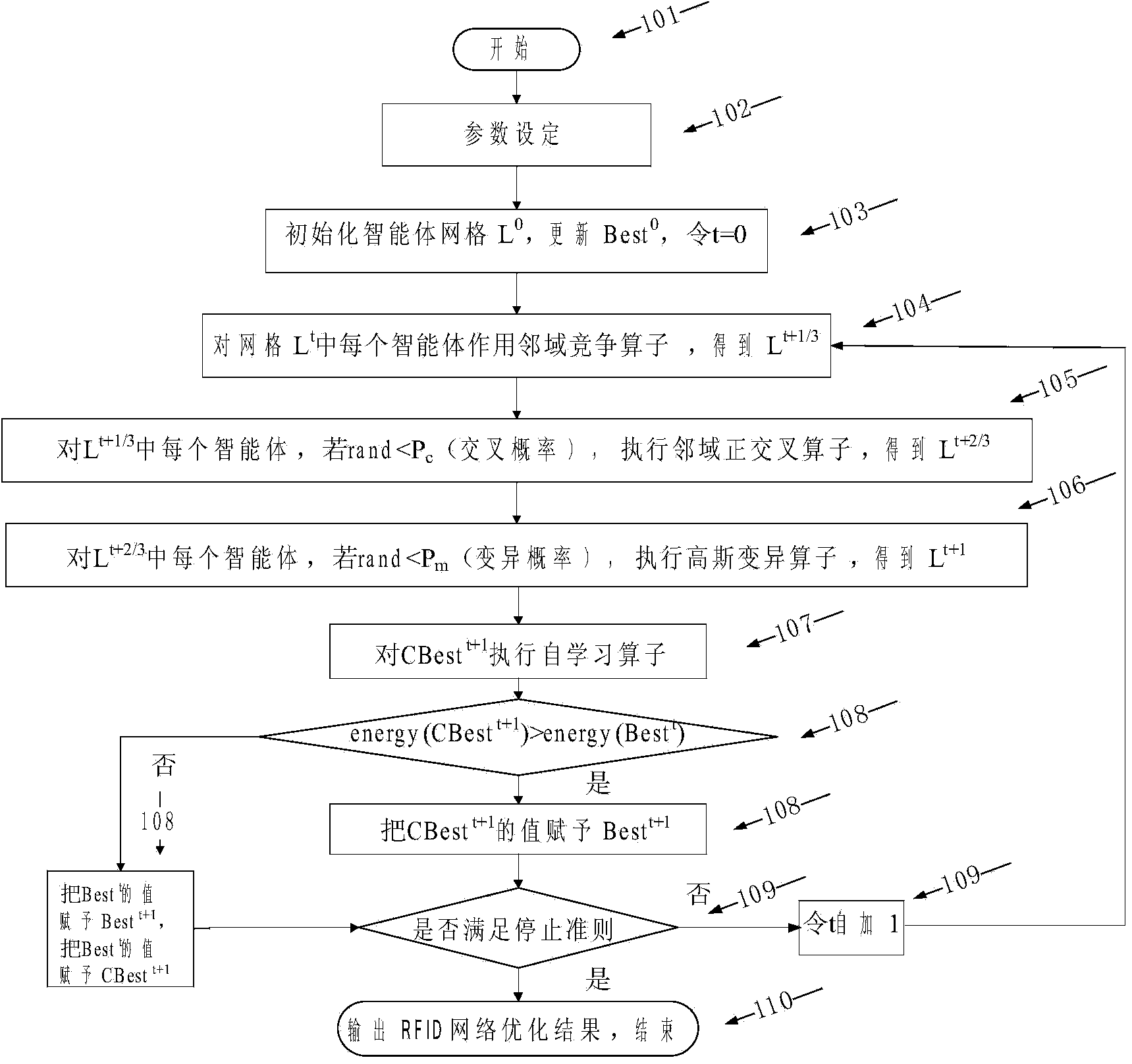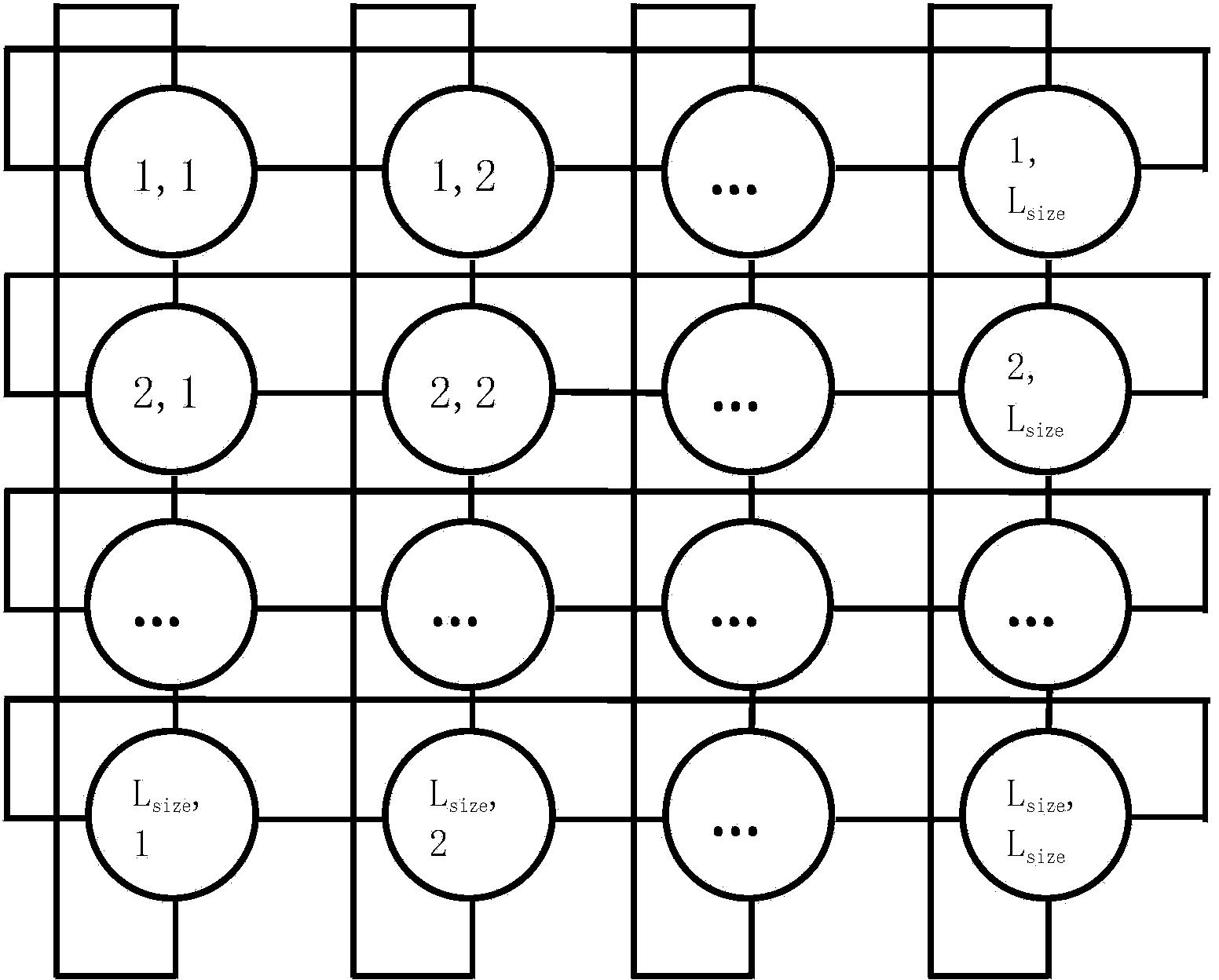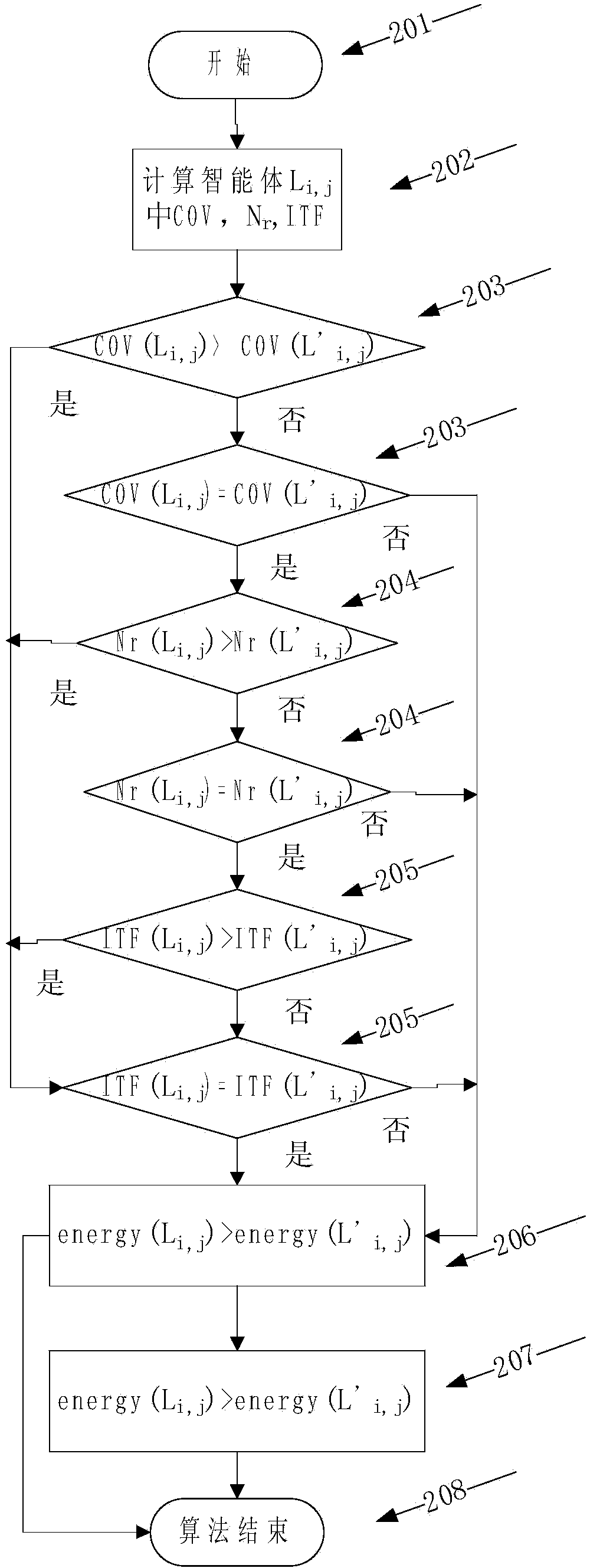RFID network topology method based on multi-agent evolutionary algorithm
An RFID network, multi-agent technology, applied in the field of electronic information, can solve the problems of slow convergence, inability to obtain project schedule, poor stability, etc.
- Summary
- Abstract
- Description
- Claims
- Application Information
AI Technical Summary
Problems solved by technology
Method used
Image
Examples
Embodiment Construction
[0071] The key to the RFID network layout problem studied by the present invention is to realize the coverage of n electronic tags by N readers under the constraints of priority relations, reduce the actual number of readers in the network as much as possible to reduce costs, and optimize the readers interference rate to improve network service quality. There are many types of RFID network layout problems. The present invention chooses to solve the problem of fixed electronic tags, and the position and number of readers are variable. The goal is to maximize the coverage of electronic tags, reduce layout costs, and reduce reader interference. .
[0072] like figure 1 as shown,
[0073] The main flowchart step features are:
[0074] Step 101: start the RFID network layout method based on the multi-agent genetic algorithm;
[0075] Step 102: Set algorithm parameters, let P o Strategy selection probability for domain competition, P c is the neighborhood intersection probabi...
PUM
 Login to View More
Login to View More Abstract
Description
Claims
Application Information
 Login to View More
Login to View More - R&D
- Intellectual Property
- Life Sciences
- Materials
- Tech Scout
- Unparalleled Data Quality
- Higher Quality Content
- 60% Fewer Hallucinations
Browse by: Latest US Patents, China's latest patents, Technical Efficacy Thesaurus, Application Domain, Technology Topic, Popular Technical Reports.
© 2025 PatSnap. All rights reserved.Legal|Privacy policy|Modern Slavery Act Transparency Statement|Sitemap|About US| Contact US: help@patsnap.com



